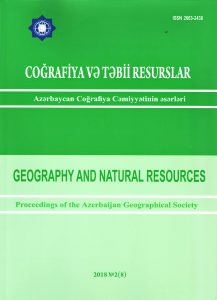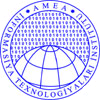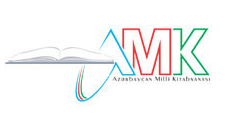NASIRADDIN TUSI AND HIS MATHEMATICAL WORK “SHAKLUL QITA”Professor Habibulla Mammadbayli, who investigated scientific activity of Nasiraddin Tusi, wrote thoughts of several popular scientists in his work by name “Muhammad Nasiraddin Tusi”. I’ll use several paragraphs of that work.
It is known that, astronomers, geodesists, crystallographers and cartographers used spherical trigonometry very often. The word “Trigonometry” was first used in books of the German theologian and mathematician Pitiscus (1505). Nasiraddin Tusi is the founder of spherical mechanics which he used in his works. That discovery was discovered by scientists of Western Europe 400 years later. Dane Tycho Brahe (1546–1601) made table of coordinates of 777 stars, which was expanded to 1005 stars and published by his contemporary Galilean Johannes Kepler (1571-1630) in his Rudolphine Tables in 1627, by basing on calculations of Tusi. It was considered the most perfect table till establishment of Royal Observatory (Greenwich – R. D.) in 1675. Watches were inseparable part of astronomical equipments used by Tycho Brahe. He had invented and tested four types of watches in 1577-1581 and came to the conclusion that, watches are unfit for solution of most astronomical problems.1 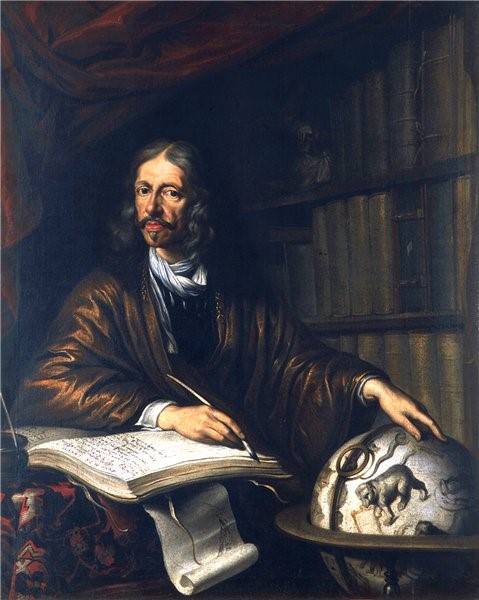  Тycho Brahe (1546-1601) Johannes Кеpler (1571-1630) Habibulla Mammadbayli wrote: “Trigonometry was an achievement of eastern scientists before additions of Euler were made. Azerbaijan had a great role in this achievement. N. Tusi and Giyasaddin Kashi played an important role in invention of trigonometry. N. Tusi wrote the first perfect work on trigonometry and modified trigonometry as an independent discipline. This work was published with different names. It was “Kitabi-fi-shaklul-qita” (The book about the perfect four-side) in Arabic, “Traktat o polnom chetirekhstoronnike” in Russian, “Das Bush uber das transversalen fiqur” in German and “Fraite quadrilatere” in French”. 2
This book also was written twice – in Arabic and Persian as “Tahriru Uglidis”. Its Arabic version was found in 1260 in Maragha. N. Tusi wrote in the introduction of this version: “I had a book, which consisted of theories by name “Shaklul qita”. I had made some additions to existing theorems and proofs there. The book was in Persian. Some of my friends asked me to translate it into Arabic. So, I took their request into consideration and translated the book into Arabic. Besides it, I published the book without several surplus and unnecessary chapters”. The work was written in Arabic as it was necessary to prepare skilful experts in Maragha observatory and to spread scientific works written there in the Near East, Egypt, Apennine and Pyrenees peninsulas. N. Tusi’s main purpose was to spread all scientific results achieved in Azerbaijan in the world. 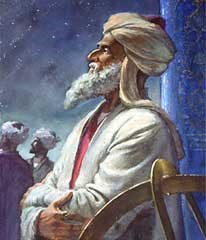 Giyasaddin Kashi (1380-1429) Leading scientists of Maragha observatory used spherical trigonometry for determination of coordinates of celestial bodies. Copies of “Shaklul-qita” were distributed among specialists in Maragha. That’s why several old copies of the book are kept in most libraries of Western Europe. But those manuscripts haven’t been learned enough as Arabic and Persian weren’t popular languages in European countries. So, manuscripts kept in different places were found and investigated very slowly. Researchers could find a lot of documents when they looked for manuscripts in administrative buildings of Istanbul. An old copy of “Shaklul qita” found in the capital of the Ottoman Empire in 1891 was among them and mentioned work was published in French and Arabic in accordance with that manuscript. After publication of that book, which was about trigonometry, a heated argument arose between historians of mathematics in Western Europe as Regiomontanus was considered founder of trigonometry according to German historians of mathematics. The need for the book “Sheklul qita” was so great that the copies made in Maragha were immediately distributed to the specialists. Thanks to it, many ancient copies are still stored at the libraries of Europe. However these manuscripts are insufficiently studied. It is because of general falling of interest in Arabic and Parsianin modern Europe. That’s whyresearches of manuscripts last so far. 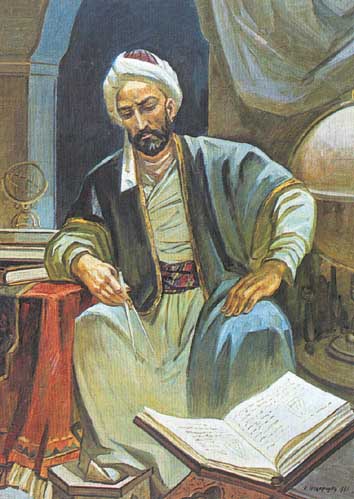 Muhammad Nasiraddin Tusi (1201-1274) After N. Tusi’s “Shaklul qita” written in French and Arabic was found by historians of mathematics, debates were restarted about the founder of trigonometry. The German scientist Henry Zutter, who had a great role in investigation of the history of astronomy and mathematics in the East, began to deny Regiomontanus’s role in this field after reading above mentioned book. He wrote: “Plane and spherical trigonometry was invented when military occupations of Tatar rulers were stopped temporarily». What would European scientists of XV century do if they were aware of this result? «May be some of them knew something about it?” These questions weren’t put in vain. Zutter thought that, some scientists knew the truth, but preferred to keep silence for unknown reasons.3 The root of disagreements was unreasonable inflation of role of Regiomontanus in the history of development of trigonometry by the German historians of mathematic sand his being introduced as the founder of trigonometry. Of course, it was their fault. How it was possible to praise a person in the field he didn’t know? Inexcusable carelessness. On the other hand, scientists protecting scientific works of Regiomontanus, having felt essential falling of its role in science, tried to stabilize situation in different ways. (Continue of article: (“The development of mathematics in Maragha observatory”) Best regards, the member of Azerbaijan Geographic Society, President grant holder on literature, laureate of the “Golden pen” award, writer/ investigator Ramiz Daniz email: [email protected], [email protected] 1 Д. Хауз. Гринвичское время и открытие долготы. Москва, «Мир», 1983. стр. 2
2 H. C. Məmmədbəyli. Mühəmməd Nəsirəddin Tusi. Bakı, “Gənclik”, 1980. səh. 92-93 3 Ф. Кечори. История элементарной математики. Одесса, 1917. стр. 147
 27262 27262 |
|








 AZ
AZ EN
EN RU
RU


